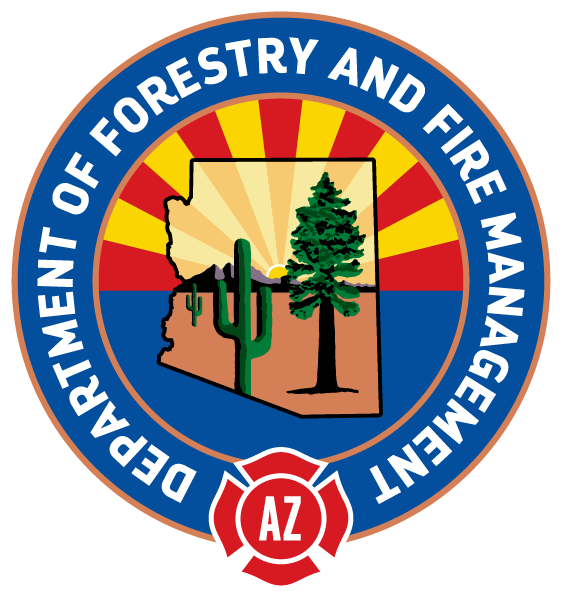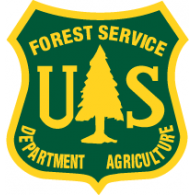The goal of the LEAF Network is to connect people with the benefits of edible trees, and to connect edible trees with the stewardship of people.
Develop A Water Resources Strategy
When determining a water resources strategy for your site, consider:
- Water needs of edible trees and how tree size affects water needs
- Available water resources at your site, shown on a site map
- Monthly and annual rainfall at the site
- How to concentrate rainfall runoff to support trees using the concept of catchment ratios
- Using graywater and condensate water help support trees
- Installing tanks to extend the availability of rainwater
By maximizing use of harvested water supplies less potable water will be needed for supplemental irrigation.
Estimate the water needs of trees Estimates of tree water needs are typically based on evapotranspiration, which consists of the volume of water transpired from tree leaves plus the water evaporated from soil under the tree. Trees can generally be grouped into low, medium or high water-use categories. The amount of water a specific edible tree will need to grow, produce and stay healthy year-to-year will depend on the tree type, tree size and on temperature, wind, humidity and other factors. Examples of low, medium and high water use edible trees are shown at right. The water needs are illustrated as a “pool” of water under the canopy of the tree, which would be applied gradually over a year’s time. The larger the tree canopy, the larger the total volume of water that would be needed. Nonnative low water use trees may need extra water in hot dry periods. Medium and high water use fruit and nut trees will typically need a range of harvested water supplies plus supplemental potable water to meet annual water needs. To learn how much water specific edible trees need—along with other important information about these trees—go to the Edible Tree Directory |
|
Closely observe and map potential water resources at your site To help develop a water resources strategy for a specific site, it is helpful to note the location of available water sources on a site plan, as shown for an example site below. Even apparently “flat land” may have localized rises and falls. Look out windows during rainstorms and walk around the site after rain stops to see where rainwater runs off roofs, where is flows across the land and where it collects—or “pools.” Note the locations of gutters and downspouts. Note where water flows from neighboring areas onto the site, and where if flows off the site. Note the potential to harvest stormwater runoff from streets and other large expanses of hardscape. Note existing or potential locations of graywater outlets and locations where air conditioning condensate or other forms of condensate is discharged and could be harvested. Using a simple homemade water level measuring device (sometimes called a “bunyip”), you can find where land is level, where it slopes and how much it slopes. This device can be made by attaching clear plastic tubing to two wooden stakes marked in inches then partially filling the tubing with water (find instructions in the Additional Resources box on the last page). For larger sites with varied topography, finding a map that shows contour lines—lines of equal elevation on the land surface—can help in determining water flow and water harvesting design. |
|
Tree water needs and rainfall rates vary month-to-month Average tree water needs and average rainfall vary month-to-month, as illustrated in graphs at right for Phoenix and Prescott. In both locations, monthly plant water needs (yellow lines = low water use trees, light green lines = medium water use trees, and dark green lines = high water use trees) can be much higher than monthly rainfall (blue lines), especially in April, May and June. This pattern occurs throughout Arizona. |
Concentrate runoff to support trees using catchment ratios Direct rainfall can be harvested in simple water harvesting depressions constructed in the soil. Rainfall runoff can be harvested in water harvesting structures placed at the bottom of slopes. However, not all rainfall runoff makes its way downslope. As shown at right, about twice as much water runs off hard surfaces as runs off earthen surfaces. |
|
The larger the hard surface (roofs, driveways, streets, parking lots and other “hardscapes”) the more water can be harvested. Visualizing “catchment ratios” can give you an idea of how much runoff water could be available to a tree.
|
|
Catchment ratios can help meet tree water needs only part of the year Catchment ratios are shown for the Tucson example at right. In this location, a 3:1 catchment ratio from a roof or paved area could help meet low water use trees needs for 9 months of an average rainfall year. By increasing the catchment ratio to 5:1, both low and medium water use trees could receive valuable concentrated runoff for 8 months of a year with average rainfall. However, in months of very low rainfall, no matter how big the catchment ratio is, rain cannot be concentrated enough to meet tree needs. The table below shows catchment ratios for harvesting water off roofs and other hardscapes to help support edible trees in areas with a range of rainfall conditions. By concentrating runoff in water harvesting basins, you make the most of valuable rainfall when it is available. For information about specific rainwater harvesting techniques, go to Start with Passive Water Harvesting and Harvest stormwater. Many edible trees will need additional water supplies in deficit months and in other months of the year. Additional water may be needed (especially for nonnative species) in the dry April - June period, during periods of extended drought, when trees are setting and growing fruits and nuts, when trees are stressed due to insects or diseases, and in other cases. Observe edible trees closely to determine their water needs. |
|
|
Incorporating graywater supplies Graywater supplies will typically be constant each month that a site is occupied. In the example site, a washing machine is located inside the back of the house and discharges water through a pipe that goes outside and discharged into a basins that also harvests rainwater to dilute the graywater. Assuming laundry is done for three people, this house could produce 600 gallons of washing machine graywater a month, or 7,200 gallons a year. For information on graywater discharged from bathtubs, showers, bathroom sinks and washing machines go to Harvest Graywater. | Incorporating condensate water supplies In Arizona, the amount of air conditioning (AC) condensate water produced at any given site varies with temperature, humidity, length of AC use and other factors. In the monsoon season, when temperatures and humidity are high and AC units are frequently operating, more condensate will be produced. In cold, dry winter months when no AC is used, no condensate water is produced. AC condensate produced at one desert home in humid August yielded over 30 gallons a day, or over 900 gallons a month. Find out where your AC unit discharges condensate water, and whether this could be diverted to trees. For more information go to Harvest Condensate Water. |
Prolonging rain water availability in a tank Installing one or more tanks will increase the length of time rainwater is available. Around 90% of the rain that falls on a smooth-surfaced roof could run off into a rainwater tank. If the example site was located in Phoenix, over 5,000 gallons of water could be harvested in a tank from just half the roof in an average rainfall year. In Prescott, over 12,000 gallons could be harvested. Tanks are not intended to contain all the annual rainfall at one time. Tanks can be filled and emptied multiple times. In one year in Phoenix, a 1,000 gallon tank could be filled and emptied 5 times; a 2,000 gallon tank could be filled and emptied 2.5 times. In one year in Prescott, a 1,000 gallon tank could be filled and emptied 12 times and a 2,000 gallon tank 6 times. The larger the tank, the more rainwater can be stored past the rainy season, however both the tank cost and tank “footprint” would be larger. Any rainfall that exceeds the tank capacity should be routed through an overflow pipe to an adjacent water harvesting basin. Deciding whether to install a rainwater tank and choosing the right size tank for your site will depend on roof area you want to harvest from, space for the tank, cost, plant water needs and other factors. For more information go to Harvest Water in Rainwater Tanks. | CALCULATING RAINWATER FOR TANKS To determine how much water you can harvest n a tank, first calculate the area of roof you want to harvest from and multiply that roof area by annual average rainfall over that roof. Using the example site, focusing on the back half of the roof:
Next, calculate 90% runoff from the roof:
|
Water resources strategy for the example site
This strategy illustrates making the best use of on-site harvestable resources
- Use existing patterns of water flow and pooling to harvest water in passive water harvesting basins throughout
- Place constructed basins about 30 feet apart to allow for the growth of full-sized trees
- Construct linear swales to direct overflow water from one basin to the next lower basin
- Create a final path for water to safely flow off site in the event of very large rainfalls
- Install a rainwater tank to capture runoff water from the back of the house roof; use a gravity-fed hose to deliver tank water to trees; direct tank overflow water to nearby basin
- Add piping to extend downspout water from the front of the house roof to a nearby basin
- Pipe graywater from washing machine outlet to nearby water harvesting basin
- Convey AC condensate water to a nearby basin that also receives tank overflow water

ADDITIONAL RESOURCES For information on design and construction of on-site water resources strategies and calculations: Rainwater Harvesting for Drylands and Beyond website Instructions for making and using a water level device, by Brad Lancaster, Youtube video Before you dig, CALL Arizona 811 (formerly known as Blue Stake) to mark buried utility lines between the street and utility meters on your property. To mark additional utilities line locations within your property, contact a private utility locating service. |
CAUTION: Never eat anything that is not properly identified. It is your responsibility to ensure that all fruits, nuts, seeds, pods and other edible products of trees and shrubs are correctly identified and safe to eat before eating them or serving them to others.
Copyright 2023
LEAF is under the fiduciary stewardship of the Arizona Community Tree Council, a 501(c)3 non-profit organization.
70 S Val Vista Drive, Suite A3-186, Gilbert, AZ 85296


 A simple water level measuring device can be used to mark lines of equal elevation and to measure land elevation differences.
A simple water level measuring device can be used to mark lines of equal elevation and to measure land elevation differences.






